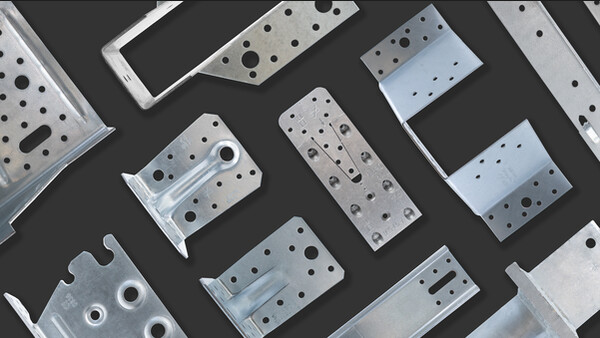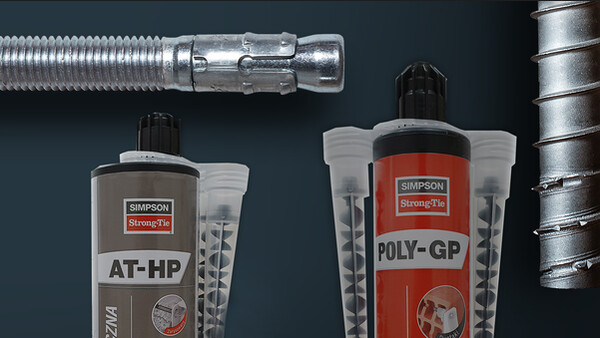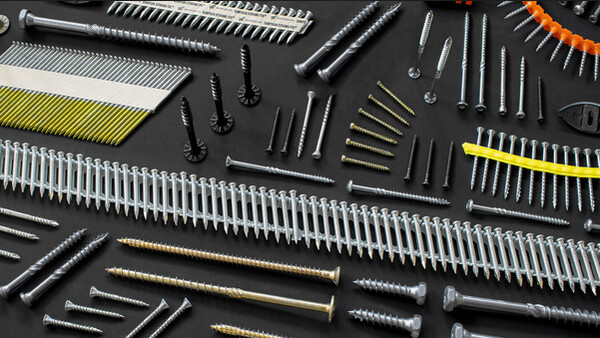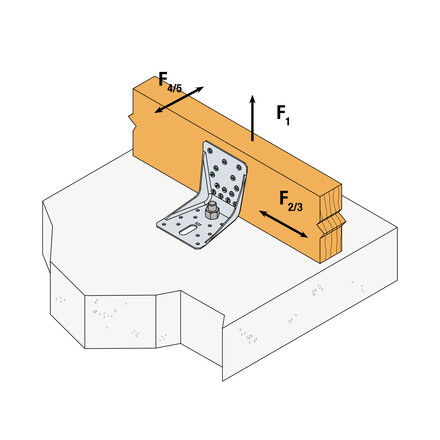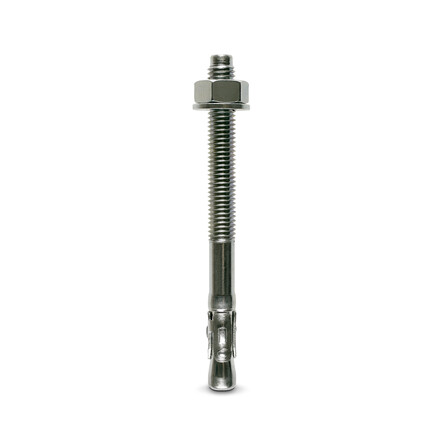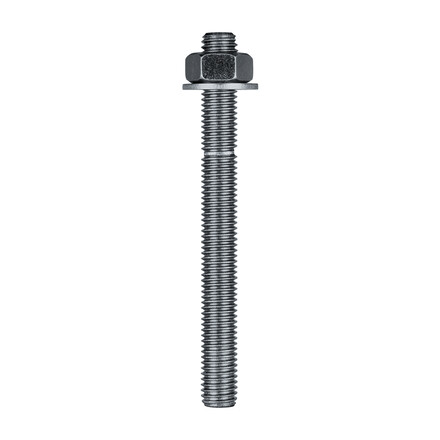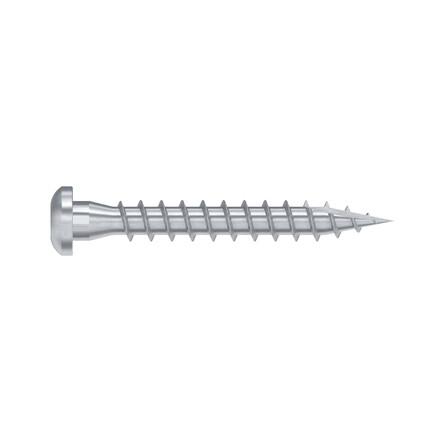Reinforced Angle bracket
Reinforced angle brackets ACRL 10520 are suitable for structural applications in framing and wood-frame houses. The oblong holes on each aisle allos a lateral adjustment.
Product Details
Features
Material
Pre-galvanised mild steel.
Benefits
- Load capacity for shear and tension
- Sveral possible configuration
- Lateral adjustment
Application
Members
- Supporting member: solid wood, glued-laminated wood, concrete, steel, etc.
- Supported member: solid wood, composite lumber, glued-laminated wood, triangular trusses, profiles, etc.
Applications
- Fastening of small trusses.
- Rafter anchors, cantilevers, headers, etc.
Technical Data
Wood/wood connection beam/beam type - assembly with 2 angle brackets
| References | Product capacities - Timber to timber - Full nailing | |||||
|---|---|---|---|---|---|---|
| Number of Fasteners | Characteristic capacities - Timber C24 - 2 angle brackets per connection [kN] | |||||
| Joist | Flange B | R1.k | R2.k = R3.k | |||
| Qty | Qty | CNA4.0x35 | CNA4.0x50 | CNA4.0x35 | CNA4.0x50 | |
| ACRL10520 | 14 | 10 | 13.4 | 14.3 | 12.8 | 18.4 |
To obtain the resistance values for a single bracket, the values in the above table should be divided by two, provided that the supported beam is locked in rotation. Please consult our ETA-06/0106 if the beam is free to rotate.
Characteristic capacities - Timber to rigid support - Connection with 2 brackets
| References | Product capacities - Timber to Concrete | |||||||
|---|---|---|---|---|---|---|---|---|
| Number of Fasteners | Characteristic capacities - Timber C24 - 2 angle brackets per connection [kN] | |||||||
| Joist | Flange B | R1.k | R2.k = R3.k | |||||
| Qty | Type | Qty | Type | CNA4.0x35 | CNA4.0x50 | CNA4.0x35 | CNA4.0x50 | |
| ACRL10520 | 2 | Ø10 | 10 | CNA* | 24.1 | 28.5 | 10.8 | 14.2 |
* Refer to Characteristic Capacity table columns for type of fasteners that can be used in Flange A. Capacities vary depending on fastener type used. The bolt design resistance requirement R#,d is determined from (bolt factor x connection design load F#,d) for the required load direction and fastener. Refer to the Simpson Strong-Tie anchor product range for suitable anchors. Typical anchor solutions depend on the concrete type, spacing and edge distances.
To obtain the resistance values for a single bracket, the values in the above table should be divided by two, provided that the supported beam is locked in rotation. Please consult our ETA-06/0106 if the beam is free to rotate.
Installation
Installation
Fasteners
On wood:
- CNA annular ring-shank nails dia. 4.0 x 35 or dia. 4.0 x 50 mm.
- CSA screws dia. 5.0 x 35 mm or CSA screws dia. 5.0 x 40 mm.
- Bolts.
- LAG screws.
On concrete:
Concrete substrate
- Mechanical anchor: WA M10-78/5.
- Chemical anchor: AT-HP resin + LMAS M10-120/25
Hollow masonry substrate:
- Chemical anchor: AT-HP or POLY-GP resin + LMAS M12-120/25 threaded rod + SH M16-130 screen.
On steel:
- Bolts diam. 10 mm
Installation
- Come with the joist,
- Add nails. It can be also screwed,
- If the header is made out of timber, the angle bracket can be attached to it with nails or screw,
- If the header is made out of concrete, the angle bracket must be attached with adapted anchors (using the installation data from the anchor)
Technical Notes
Technical Notes
F1: tensile force in the central axis of the angle-bracket
Particular situation of a fastening with only one angle-bracket:
- If the overall structure prevents the rotation of the purlin or the post, the tensile strength is equal to half of the given value for two angle-brackets.
- Otherwise, the connection resistance depends on the « f » distance between the vertical contact surface and the point of load application.
F2 and F3: shear lateral force
Particular situation of a connection with only one angle-bracket:
- The resistance value to consider is equal to half of the one given for two angle-brackets.
F4 and F5: transversal force directed towards or opposite the angle-bracket
- The connection resistance depends on the « e » distance between the base of the angle-bracket and the point of load application.
- To consult corresponding loads, contact us.
Only F1, F2 and F3 forces for connections with 2 angle-brackets are present on this sheet.
For more information, contact us
